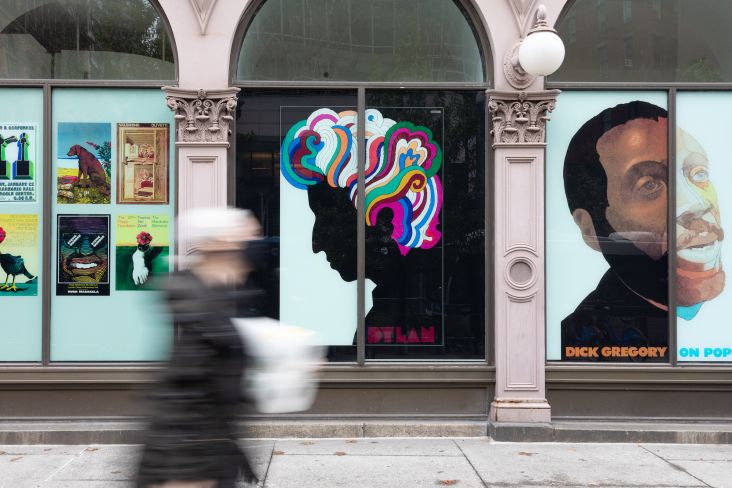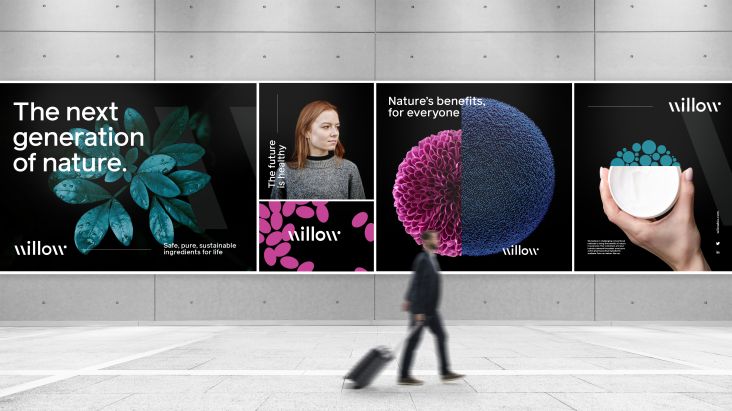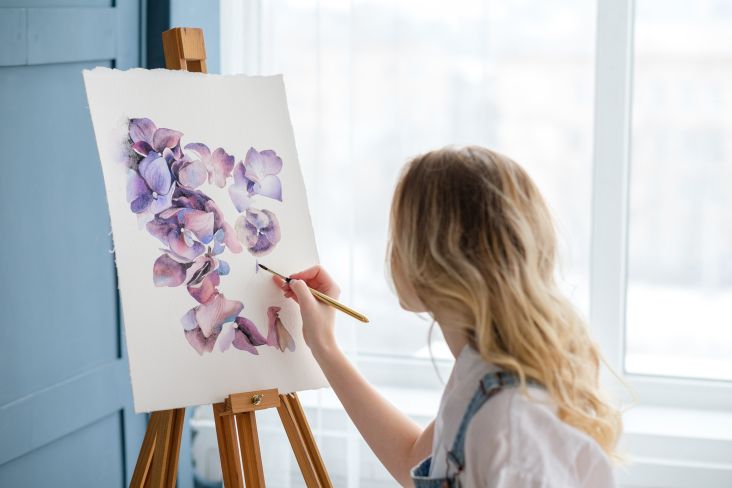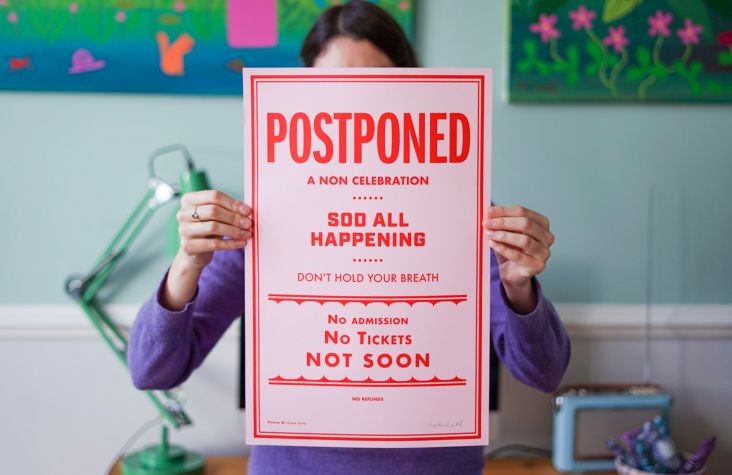How to get your creative products featured in the press
You might be a jewellery designer selling products online or an illustrator hoping to push some new prints – whatever you're doing to make a living; you need publicity in magazines, blogs, and newspapers to raise your profile and get new customers.

Image licensed via Adobe Stock
That's where PR helps. For those of you who don't yet know what PR is, there are many definitions. Essentially, it's a form of marketing to enhance and protect your reputation.
Those who do PR extremely well are most likely to be the same damn names you see popping up everywhere. They know journalists by their first names. They've got press packs and beautiful product photography. They've even got to grips with editorial calendars, publishing schedules – understanding what journalists need without having to chase them. Want to know how they do it? Here are our PR tips for creatives who sell products.
Understand the life of a journalist
Here's the thing no one really tells you: journalists are busy. Really busy. They get bombarded with emails, chase ups, requests. Sometimes people message them on their personal Instagram, "Hey, did you get my email?" Life is hard for a journalist. They get swamped.
Change your perspective and see what it's like to be in their shoes. What can you do to make their life easier? Because if you understand their own challenges, you'll have a much better chance of getting their attention and being featured.
You see, journalists are time-poor and under deadline. Don't assume they only feature those who are the best designers in the world; often, it's just about finding the easiest and quickest people to write about. And that means you should remove all possible obstacles in their way.
Get the basics right online
So with a journalist in mind, what do they need? What barriers can you remove to ensure you have a fighting chance for coverage? Well, let's start with your website. A journalist might be researching a story and discover you online. How can you ensure they stay browsing and get in touch? Here are some pointers:
Have an information-rich, comprehensive About page
I often pull my hair out when I visit the most important section of someone's website: the About page. It's often the first thing any journalist would click on, so why are so many so disappointing? It's the first impression, so make sure it's well written, has plenty of information about you, what you do, where you are, and your background. You should even include your full name, too – it might sound lovely just featuring your first name but will a journalist have time to email and ask for your surname? (Unless, of course, you only go by one name – in which case, ignore this point entirely!)
If you must have a contact form, add a 'press' email address too
I understand why contact forms are necessary. They make life easier in many ways. But if you insist on having one, at least provide a separate email address for the 'press'. We often have to send out blanket emails to 20+ designers or makers when pulling features together – contact forms are clunky and time-consuming. Remember, you don't want to make the journalist chase you.
Create a 'Press Area' on your website, specifically for journalists
This new web page should be clearly labelled in the navigation and include your press releases or your latest news, along with downloadable high-res images of your products (Sagmeister & Walsh did this beautifully). Say whether journalists are allowed to use them. It increases your chances of getting featured!
For various reasons, not all of you will feel comfortable providing such assets for all to see. In which case, inform journalists that you have 'Press Packs' available should they want to get in touch. You could then prepare folders in the cloud, on Dropbox or Google Drive, ready to send on request. You might use something like Vocast, too – but that might be overkill for some. (More on 'press packs' later.)
's website featured quality portraits](https://www.creativeboom.com/upload/articles/2f/2f8dc13c0aae73ae2b2880d1bd5b6eeb81f4ac17_944.jpg)
The press area on Sagmeister & Walsh's website featured quality portraits
Learn how to write a press release
We've covered how to increase your chances with journalists who approach you. What if you want to pitch a story to them? Well, you'll need a press release first and foremost.
Everyone I speak to about press releases always worries immensely about writing their own. Trust me; it's easy. A press release is just a useful communication tool that is distributed to the media. Its purpose is to announce news items, events, product launches or business updates.
Journalists are more likely to cover your story if you have taken the time to draft your press release. They often don't have time to hunt around for the information they need. By providing everything fuss-free, your story is more likely to be covered. Here's how you write a press release:
Choose a heading
Give your press release an exciting title – don’t worry too much about it being snappy; make sure it stands out. Put your heading in bold. Add a date to your press release. Ideally, the same date it's issued. It will add gravitas to your story.
Immediate or embargoed?
Decide whether your press release is for 'Immediate release' or 'Embargoed until X date'. Embargoed releases are useful for when you want the journalist to keep the story on hold until the date stipulated. It's handy for product launches or events, for example.
Get the right angle
Before you draft your release, think of the who, what, when, where, why and how. It will help you to structure your copy and ensure it flows. Think of the news angle. Journalists will only publish your story if they think it's newsworthy. For example, "Artist Josephine Bloggs has launched a new collection of typographic necklaces that contain message tributes to key workers with profits going to NHS Charities'.
Consider the target media
Every newspaper, blog and magazine has a different writing style or audience. Why not adapt your press release to suit each one? For example, create a more "local" news angle if you're targeting a regional newspaper, compared to a national magazine.
Keep it simple
Avoid repetition and keep sentences clear and concise. Don't waffle.
Add comment
Include a quote from yourself and use this area to repeat your key messages. Remember, your quote is the only part of your press release that the journalist can not change or edit, so use it wisely. Avoid "I am delighted".
Factual is best
Stick to the facts and only allow any views or opinions to be included in your quote, not within the main body of the release. Take any emotion out.
The End
Signify the end of your press release with 'ENDS' and don't forget to add some company information below. This is background information for the journalist to consider, usually under the header 'Notes for Editor'. Include your website address.
Provide contact details
Write something like: 'For media enquiries, please call John Smith at The Business on 01234 56789 or email: [email protected]'.
Format your press release
When it comes to saving your press release, I'd recommend creating a Word doc as well as a PDF version. That's because every journalist is different: PDFs, for example, can be a nightmare to extract text from, adding more workload.
Make product photography a priority
Next, let's look at the one thing that determines media coverage over anything else, and that's quality photography that is well-lit, bright and appealing. Designers and makers who regularly get featured in leading magazines and blogs know this, which is why you always see them everywhere.
A dimly-lit, washed-out picture of your latest jewellery collection won't cut it. So invest in some decent equipment, like a quality camera and lightbox, to get your prints and pieces photographed beautifully. Or even better, get a professional like Holly Booth to help – she does an amazing You Post It, I Shoot It service where you post your products to her, and she'll do the rest. Even styling.
It's worth noting that some media will want 'cut-out' imagery where you present your products with a white or transparent background. Others will want 'lifestyle' shots where your products are styled against a beautiful backdrop or worn by a model.
Photography can get expensive, so there's always the option of using mockups to help visualise your products: choose high-quality templates wherever possible.
 understand the importance of quality photography](https://www.creativeboom.com/upload/articles/c2/c27ab8179b3de8e17702cdf192ef03f2356f2409_944.jpg)
Jewellery designers like Chalk understand the importance of quality photography
Create downloadable 'Press Packs'
Now you have a press release and accompanying images of your products, you've created your first 'Press Pack'. Put it in cloud storage, ready to share links with journalists over email or DMs.
With photographs, it's important to note that every newspaper, magazine and blog is unique – they'll all need different image sizes, and formats, plus those printed will require CMYK versus those online that need RGB. So do the hard work for them and provide separate folders for various needs, clearly labelling everything. Do this every single time.
When naming image files, try and include the caption and any required credit, i.e. is there a photographer to mention? Some press packs include a separate image sheet, detailing every image and its caption and credits. Might you want to do the same for your pics?
Pitch your news and updates to journalists
You've got your press pack sorted. Now it's time to get yourself out there. Make a list of the media titles you want to approach and find the relevant journalist. Most will have their contact details online. Do your research before you prep your email pitch: you might want to look for any submission guidelines, like ours where you'll learn more about what they need. Then here's what you do:
First tip: Don't add their email address until you're happy with the draft. You don't want to accidentally hit 'send' before you've perfected your email pitch.
Start with a catchy subject line. Journalists scan their inboxes and look out for interesting angles and stories. What would entice you to click and open an email?
Get the journalist's name right. A misspelling might put them off. They're only human. (Personally, I couldn't care less if you call me 'Kate', 'Katie' or 'Kat' instead of 'Katy' but others might find it sloppy.)
Get straight to it. Tell them the juiciest part of your story. 'Hi Katy, I've got a new jewellery line, featuring typographic messages that celebrate key workers...'
Perhaps mention where you think your story might be relevant within the magazine. On Creative Boom, for instance, we have a Shopping section, ideal for those of you selling creative products. Take a look at previous stories, too. And perhaps add, 'I noticed you ran a story on Leon Edler and his amazing charity prints. I've also just launched some new products to support key workers...'
Next, spell out that you have attached a press release and some 'preview low res' images and that you have a press pack in the cloud, with everything they need and various assets to choose from. Make this stand out – bold the copy if you think it will help.
Provide contact details and say you're happy to comment or discuss further.
Overall, keep the email pitch concise. Be upbeat and confident. Don't take it personally if you hear nothing back. Journalists really do get swamped. Try again a week later. It does no harm to chase and give a little nudge.
If you're having no luck on email, you might contact journalists on Twitter, Instagram or LinkedIn. But approach this with caution and on a case-by-case basis. Everyone is different. Always check to see if someone has put 'No DMs' in their social media profiles.
One last tip, if your story is strong, consider offering it as an exclusive to one magazine only. Otherwise, try and issue the pitch on the same day to every media title, as no one will want to run it days later when others already have – it'll become "old news" and reflect badly on the journalist.
Become a go-to
Want to have more PR success in future? Become a reliable source for journalists to write about. Someone happy to take part in interviews, features, or comment pieces. At the drop of a hat.
Have professional portrait shots
Invest in quality photographs of you. Journalists will want your portrait if they're writing an interview. Even influencers and podcasters will need a headshot when they have you on their show.
Get a podcast-quality microphone and camera
With podcasts in mind, get yourself a mic and camera, separate from your laptop or computer. Learn how to record yourself locally. Understand what podcasters need to get great audio and be a dream guest on their show. (Other shows will be listening!)
Spell it out on your website: "Press, welcome!"
I know we've already covered this, but it's worth mentioning again: have a 'Press Area' on your website and stipulate that you are happy to be interviewed or featured. Point out that you have professional portrait shots, product photography, press releases and even a top-quality microphone and camera for podcast or video interviews.
Always have your PR hat on
Journalists are constantly in need of fresh content. Keep an eye on Twitter for things like #journorequests and respond fast. Follow all your favourite magazines' editorial teams and see what they're saying. Don't just wait for journalists to come to you.
Consider topical themes, too. But remember that many journalists work three months in advance, so if you're thinking of emailing Cosmopolitan or Ideal Home about Christmas gifts, you're too late – they would've wrapped up their festive issues in August.
Finally, create your own editorial calendar. Note when National Freelancers Day is happening, for example, and reach out to your favourite creative magazines a month before, asking if they plan to do anything and whether you can provide a comment.
Think like a journalist. Understand their deadlines and demands. Become their best friend and send them everything they need without allowing them to chase. And with some initial investment, a lot of persistence and knowledge of how the system works, you'll soon be one of those names seen everywhere.




















 for Creative Boom. © Creative Boom](https://www.creativeboom.com/upload/articles/88/885afc2954af947d8d1957fb08e948aeef15dae7_732.jpg)




